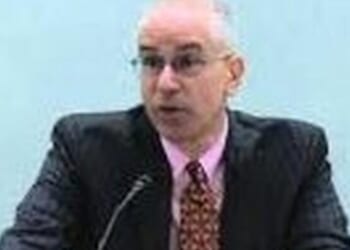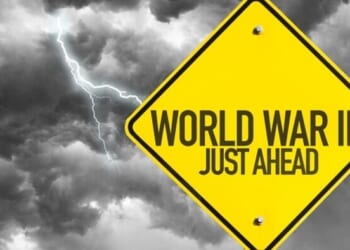Attendance at Mass has plummeted since that New Springtime for the Church, heralded by the Second Vatican Council. There has been no springtime. Indeed, in no area of human culture has there been any such—not in the fine arts, film, literature, education, social institutions, civic life, folkways; not in the ordinary interchanges of human beings outside of their homes; not even in life within the home.
People have not turned from the Church to the mosque, or to the Order of Raccoons, or to some weekly meeting of armchair philosophers. They have turned to nothing at all; or to worse than nothing, the antisocial life of social media, where all is rancor, pride, and spite, and no one need look anyone in the eye and say, “I think you’re wrong,” and begin a fruitful or at least a human discussion. The glory of God is man fully alive; the boast of Satan is to reduce man to less than man, to deaden him within, to get him to prance with pride while he becomes pettier, more predictable; to replace him with automatism, as if he were aspiring with all his tiny heart to become a machine.
I’ve visited my hometown after seven years, and I am struck by how busy the streets are with traffic and how empty the sidewalks are of persons. It is a death-in-life. A few hundred feet from my mother’s house is a small playground with a sign dedicating it to one of our old neighbors. It is empty, always. It is as if someone has mummified and decorated a corpse.
The town had promised the children in my neighborhood a playground. That was almost 60 years ago, when I was a boy. For we had had one, shabby enough, but full of life. On it stood the ruins of a tiny schoolhouse. It had no roof. The walls were scrawled with graffiti. Nails and jagged wood stuck out here and there. Of course we loved it.
One summer, the town sent a couple of teenagers there to oversee it and to do some projects with the inevitable swarm of children climbing the monkey bars, or playing wiffle ball, or hanging around. One project was to make plaster-of-Paris “statues” from rubber molds and then to paint them when they had hardened. One I recall was a bust of John F. Kennedy; another was of the Ten Commandments.
But an old lady next door couldn’t stand the noise, so she badgered the town council till they let her buy the patch of land the playground was on. They promised us a new one nearby, but by the time they got to it, times had changed, and we who had known the old playground were too big for the new one. There were fewer children, too. There it sits, unused, a monument to a feature of human life fallen away.
It is the same with the baseball fields. When I was a boy, we had only one, a sandlot that the men also used for softball and baseball, so there was no fence in the outfield. It was inadequate, but that didn’t matter.
Our small town fielded six Little League teams, with 15 boys on a team. My brother and I and seven of our cousins and three next-door neighbors played on a team that my uncle and then my father managed. But now my brother tells me that the town has only one team. When we had six teams, we played a 20-game schedule, 10 games in each half, which meant there were 60 games all told, so for 12 weeks in the late spring and summer, there were five games a week. People would wander over to the sandlot to check out what was going on. Now, nothing.
I drove past the church, and I saw that parish offices now occupy the house where the Immaculate Heart of Mary sisters used to live, when they taught in the three-story building that one of the parish’s old pastors had built. When I attended there, we had between 45 and 51 pupils in my class, all in the same room. Nobody thought that was odd. The school is no more. The parish sold the building to the town, which now uses it for its offices.
The town’s own high school stood across the street, but that was rendered obsolete after the town consolidated its school district with those of two adjacent towns. The new institution was built outside of where anybody lived. A memorial marks the place where the high school used to be. It used also to swarm with young people, most of whom would walk to and from the place, as we did at our Catholic school, so that, twice a day during the school year, there would be some 500 children on the streets, and many of these might not go straight home but rather stop for a snack at the drug store or one of the small groceries, or get a haircut, or lean over the rail of the bridge to spit in the river, or anything—anything human.
People used to do such things. Teenagers went to dances where a local band was playing—and there were innumerable such bands, everywhere in the country. In my town, they used to tack up their advertisements on telephone poles. The fire department, a five-minute walk from my house, often rented space to a band for a small fee; admission might cost a couple of dollars. Such bands acquired a local or regional reputation. One of them in our area, The Poets, played their last gig in 2019. The point is not that they have been superseded by other bands. They have been superseded by nothing.
When I went to the fire department to hear them play, I walked down a very steep road that in snowy weather you would never dare to drive on—so the man who lived at the bottom of the hill, the father of one of my classmates, set up sawhorses in the middle of the street below to keep people away. I like to think that he did so also to allow us children to sled down that hill, which ended in a 90-degree blind turn, so that we did rely on there being no cars to run us over.
On the other side of town there was a hill almost as steep but much longer. It was interrupted by a bed for railroad tracks, which under snow became a ramp for sleds to strike at great speed and sail into the air. This hill could not be cordoned off against cars, but boys would sled down it anyway, as their field of vision there was clear. I wonder how long it has been since anyone has sledded down either hill.












